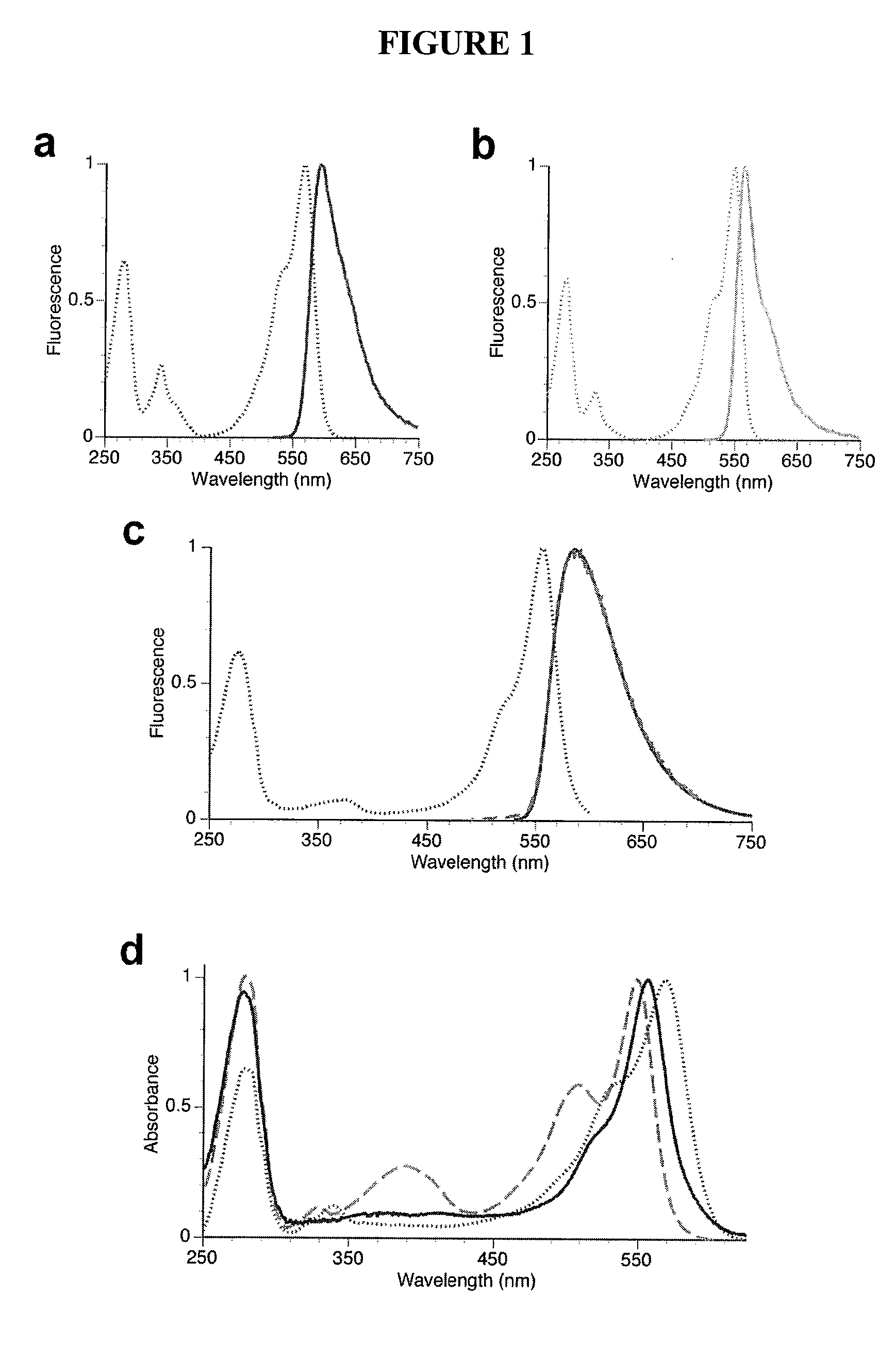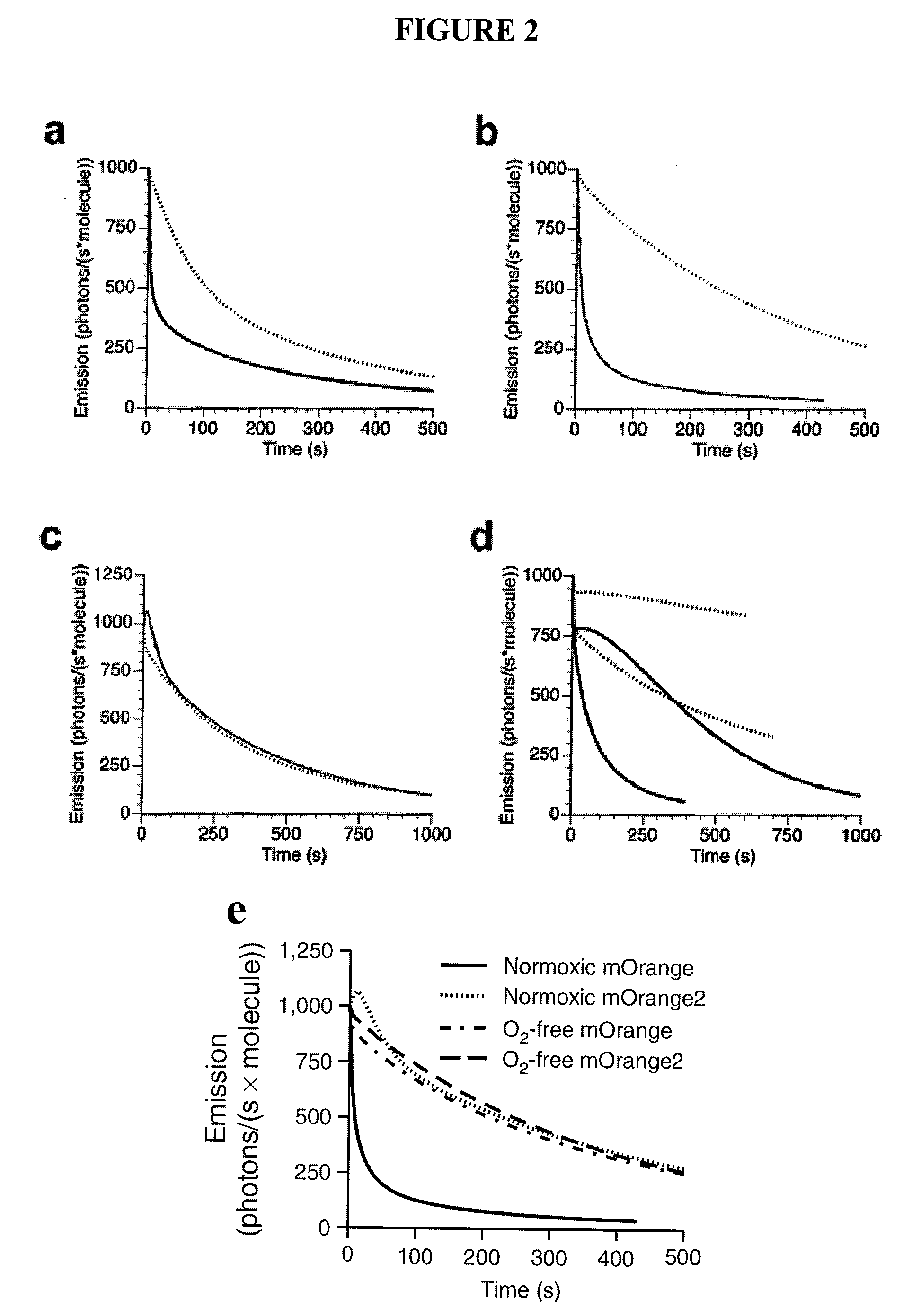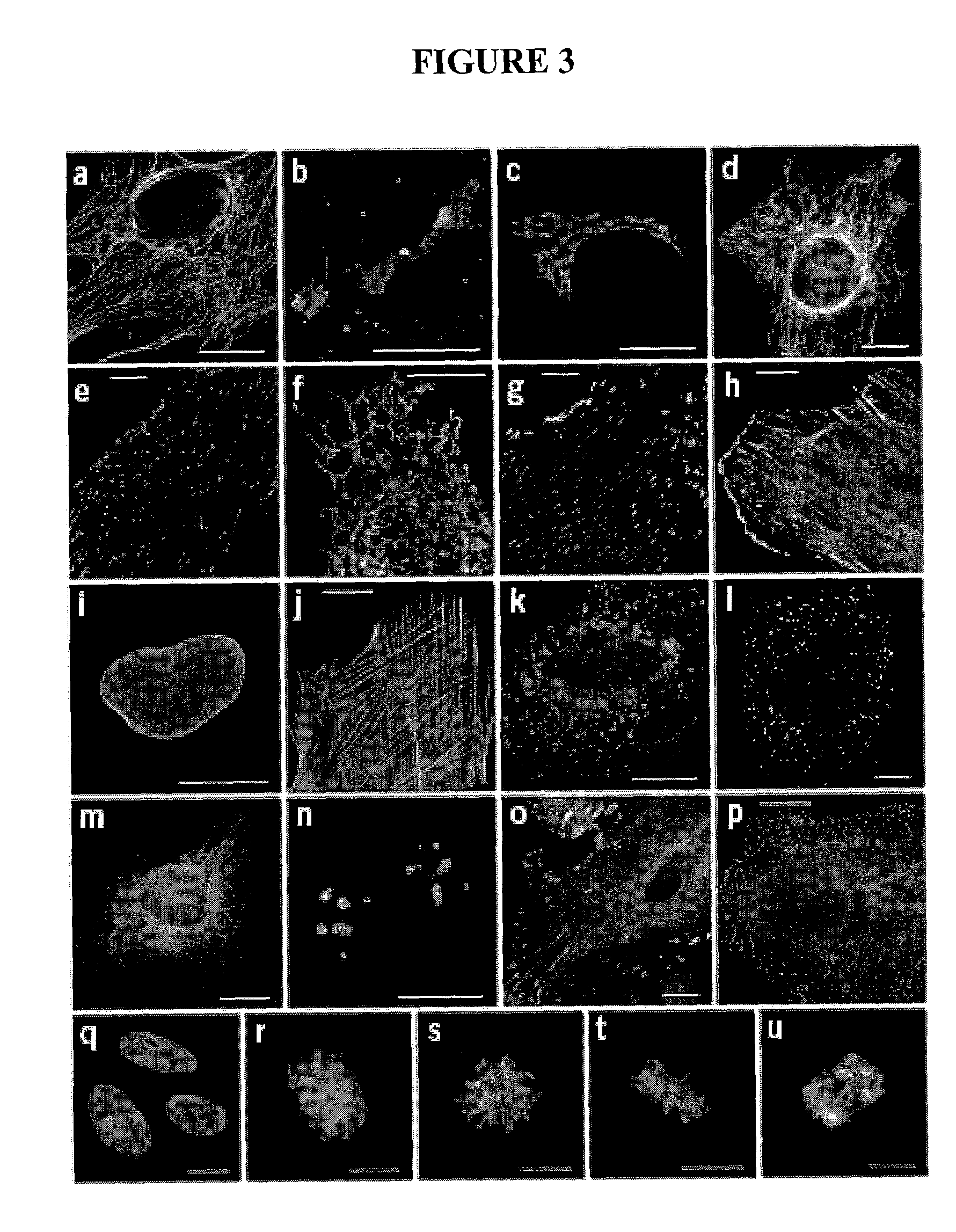Fluorescent proteins with increased photostability
a fluorescent protein and photobleaching half-life technology, applied in the field of identification and isolation of fluorescent proteins in various organisms, can solve the problems of unpredictable photobleaching behavior of the fluorescent proteins resulting from fluorescent proteins, poor photobleaching of novel fluorescent protein variants, and a large limiting factor of lack of photostability, so as to increase the photobleaching half-life and increase the photobleaching. the effect of photobleaching
- Summary
- Abstract
- Description
- Claims
- Application Information
AI Technical Summary
Benefits of technology
Problems solved by technology
Method used
Image
Examples
example 1
[0130]Photostability assay and rationale. To simulate illumination conditions on a typical epifluorescence microscope setup, a solar simulator was used, which produces a collimated beam of light approximately 10 cm in diameter from a 1600 W mercury arc lamp. This illumination intensity, while approximately 100- to 200-fold lower than that produced by arc lamp illumination on a microscope without neutral density filters, is sufficient to photobleach the highly photolabile fluorescent protein mOrange to 50% initial intensity after approximately 10 minutes. This reasonably short time for photobleaching entire plates of bacteria expressing fluorescent proteins allowed us to quickly screen libraries of up to 100,000 clones. Heating of plates was minimized by using a cold mirror to eliminate infrared light from the solar simulator beam and by placing the bacteria plates in a custom-built water-cooled aluminum block. At wavelengths necessary to photobleach orange and red fluorescent protei...
example 2
[0132]Evolution of a brighter photostable red monomer—mApple. Simultaneously evolution of a brighter and more photostable red fluorescent monomer was undertaken. The relatively photostable variant mCherry exhibits red fluorescence (ex. 587 nm, em. 610 nm) with a pKa of 2, it was reasoned that restoring threonine 66 in the chromophore of mOrange to the wild-Type glutamine, as in DsRed, (thus restoring red fluorescence) might allow us to find a high-quantum yield red fluorescent variant with a pKa in a practical range.
[0133]As predicted, the mOrange T66Q mutant exhibited red fluorescence similar to mCherry, but with a pKa for transition to high-quantum yield red fluorescence at a lower value than mCherry (about 8.0). One round of directed evolution led to the first low-pKa bright red mutant, mApple0.1 (mOrange G40A, T66Q), which had a pKa of 6.4. This mutant, however, exhibited rapid photobleaching and had a substantial fraction of “dead-end” green chromophore which was brightly fluor...
example 3
[0138]Evolution of a brighter photostable orange monomer—mOrange2. The engineering of a photostable variant of mOrange, which, though it is the brightest of the previously engineered mRFP1 variants, exhibits relatively fast bleaching was undertaken. Because substitutions at position 163 successfully improved photostability during the evolution of both mCherry and mApple, the M163Q mutant of mOrange was initially tested, but it was found that its several-fold enhanced photostability was accompanied by undesirable decreases in quantum yield and maturation efficiency. The M163K mutant of mOrange exhibited substantially enhanced photostability and matured very efficiently, but unfortunately suffered from increased acid sensitivity (pKa −7.0). Because another orange fluorescent protein, mKO (derived from Fungia concinna) (Karasawa, S. et al., Biochem J, 381:307-12 (2004)), is both highly photostable (Shaner, N. C. et al., Nat Methods, 2:905-909 (2005)) and possesses a methionine at the p...
PUM
| Property | Measurement | Unit |
|---|---|---|
| Fraction | aaaaa | aaaaa |
| Fluorescence | aaaaa | aaaaa |
| Photostability | aaaaa | aaaaa |
Abstract
Description
Claims
Application Information
 Login to view more
Login to view more - R&D Engineer
- R&D Manager
- IP Professional
- Industry Leading Data Capabilities
- Powerful AI technology
- Patent DNA Extraction
Browse by: Latest US Patents, China's latest patents, Technical Efficacy Thesaurus, Application Domain, Technology Topic.
© 2024 PatSnap. All rights reserved.Legal|Privacy policy|Modern Slavery Act Transparency Statement|Sitemap



